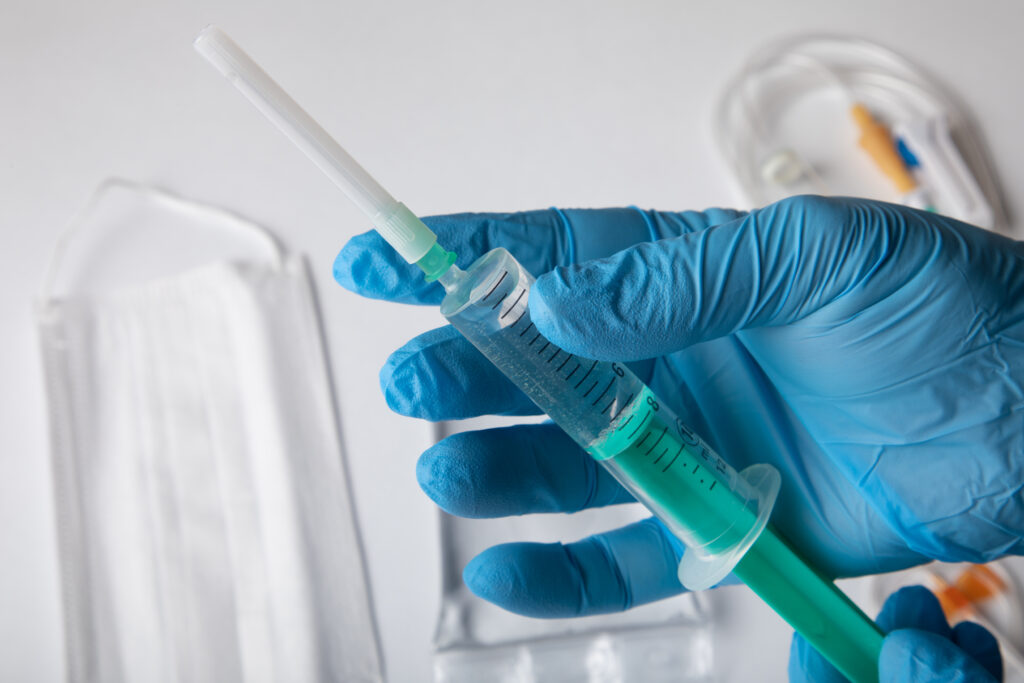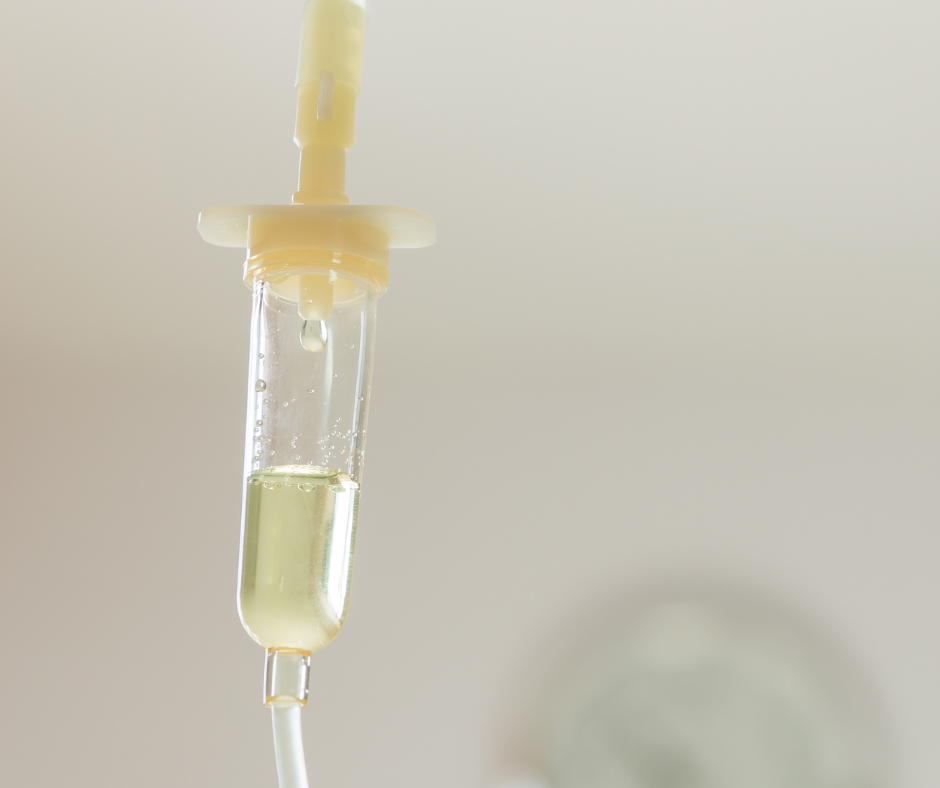At Salvida, doctors will arrange an iron infusion if, for example, there is an intolerance to oral iron supplements or absorption disorders in the intestine.
What happens during an iron infusion?
With an iron infusion, the complete dose of iron is supplied to the body within one to two sessions without any losses.
The iron preparation is drawn up into a syringe and then injected into a bottle or bag of saline solution. The saline solution takes on a typical brown color. The total dose required is calculated by the treating doctor and can be administered with a single or a few treatments as required.
The iron is infused into the body via the vein and quickly transported to the storage cells, from where it is used for blood formation and other important iron-dependent processes as required. During the infusion, the attending physician monitors the patient and keeps them in the surgery for a few minutes after the iron infusion to ensure that no side effects requiring treatment occur.
Advantages:
The small intestine can only absorb a limited amount of iron each day. Therefore, most of the iron in high-dose tablets is not available to the human body and is excreted instead.
The problem: Unabsorbed iron from oral supplements can disrupt the microbiome and irritate the gastrointestinal mucosa during its passage through the digestive tract. This can cause side effects such as black stools, nausea, diarrhea, constipation, etc. and increase existing inflammation, which in turn impairs iron absorption in the intestine.
Infusions can avoid this problem.
Iron infusions can bypass the digestive tract and enter the bloodstream directly. The iron is immediately transported to the stores, where it is available for the formation of the red blood pigment, the transport of oxygen and the energy supply of the cells through the enzymes of the respiratory chain.
This is the main benefit of iron infusions: They can quickly relieve symptoms, rapidly increase well-being and significantly improve performance.
What should I look out for during infusion therapy?
In addition to selecting the optimal therapy for the treatment of iron deficiency, it is particularly important to clarify the causes of iron deficiency. These can be heavy menstrual bleeding, a diet low in iron or increased iron consumption due to sport. However, there may also be an underlying disease that needs to be treated urgently.











